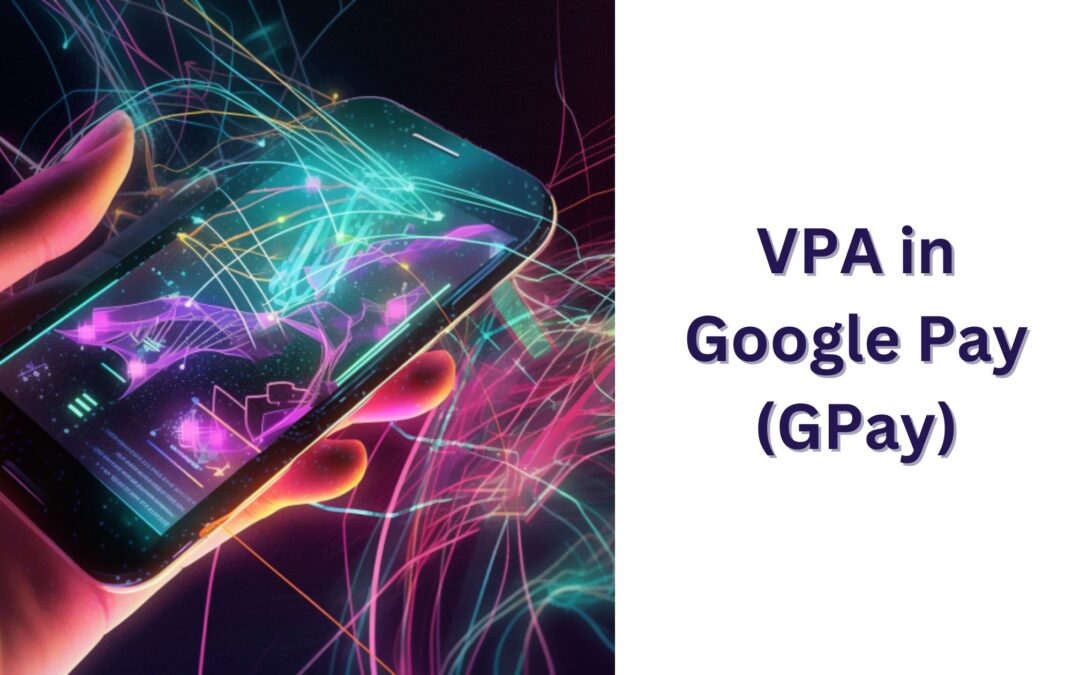In the ever-evolving world of digital finance, the name Google Pay (GPay) shines brightly as a frontrunner. This mobile payment app has transformed the way we handle our finances, making everyday transactions more convenient and secure. At the heart of its success lies the concept of Virtual Payment Addresses (VPAs), a feature that sets GPay apart and elevates the user experience.
In this article, we will delve into the world of VPAs in GPay, exploring what they are, how they work, and why they are changing the game for digital payments.
What Are VPAs in GPay?
Virtual Payment Addresses, or VPAs, in GPay are unique identifiers that simplify the process of sending and receiving money. Think of them as a digital alias for your bank account details. Rather than sharing sensitive information like account numbers and IFSC codes, you can use a VPA to make transactions securely.
How Do VPAs Work in GPay?
Understanding how Virtual Payment Addresses work in GPay is crucial to leveraging this feature effectively:
- Linking Your Bank Account: To use VPAs in GPay, you first link your bank account to the app. This step ensures that GPay has access to your funds for transactions.
- Creating Your VPA: Once your bank account is linked, you can create your VPA. This typically involves choosing a unique username or identifier, which will become your VPA. For example, if your chosen VPA is “john.doe,” your full VPA will be “john.doe@okaxis” if you’re using Axis Bank.
- Making Transactions: With your VPA set up, you can start making transactions. When you want to send money, simply enter the recipient’s VPA instead of their bank details. GPay will take care of the rest, securely transferring the funds.
- Receiving Payments: Receiving payments via VPAs is equally straightforward. Share your address with others, and they can send money to you using GPay, hassle-free.
Advantages of VPAs in GPay
The integration of VPAs in GPay brings a host of benefits to users:
- Enhanced Security: VPAs add a layer of security by reducing the need to share sensitive financial details. This lowers the risk of unauthorized access and fraud.
- Simplified Transactions: VPAs streamline the payment process. No more grappling with lengthy account numbers and complicated codes; a VPA simplifies everything.
- Speedy Transactions: Transactions through Virtual Payment Addresses in GPay are often near-instantaneous. Say goodbye to waiting days for funds to clear.
- Convenience: GPay’s user-friendly interface and VPA feature make managing finances a breeze. You can conduct transactions, check balances, and pay bills—all from one app.
GPay vs. Traditional Banking
The introduction of VPAs in GPay highlights a stark contrast between modern digital payment solutions and traditional banking methods. Traditional banking, with its brick-and-mortar branches and legacy systems, often involves time-consuming and cumbersome processes. In contrast, GPay with VPAs offers speed, simplicity, and convenience, ushering in a new era of financial transactions.
Takeaways
In conclusion, VPAs in GPay are a testament to the power of innovation in the financial technology sector. They have revolutionized the way we handle money, making digital payments more secure and convenient than ever before. As technology continues to advance, and more individuals and businesses embrace digital payment solutions like GPay, the role of Virtual Payment Addresses will become increasingly significant in our daily lives.
So, if you haven’t already, consider harnessing the power of VPAs in GPay for a smoother, safer, and more efficient digital payment experience. It’s not just a feature; it’s a gateway to a more streamlined financial future.
FAQs
Can I use VPAs in GPay for international transactions?
They are primarily designed for domestic transactions. International payments may require different mechanisms, so it’s essential to check with your bank for specific details.
Are VPAs compatible with all banks in GPay?
GPay supports a wide range of banks for them. However, it’s advisable to check whether your bank is compatible with GPay for this feature.
What should I do if I forget my VPA in GPay?
You can typically recover it within the GPay app. The recovery process may involve verifying your identity or contacting GPay support.
Is GPay safe for transactions through VPAs?
GPay employs robust security measures to protect your transactions, making it a safe option for using Virtual Payment Addresses.
Can I have more than one VPA in GPay?
Depending on your bank and GPay’s policies, you may be able to create and manage multiple Virtual Payment Addresses within the app for various financial purposes.

